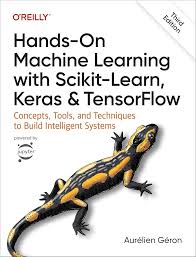White Paper: RAG, LLMs, Vector Databases, and Complete Generative AI with LangChain and Hugging Face
Introduction
In recent years, advancements in artificial intelligence have led to the emergence of powerful language models (LLMs) capable of generating human-quality text. However, these models often lack access to specific knowledge bases, limiting their ability to provide accurate and informative responses. Retrieval-Augmented Generation (RAG) addresses this limitation by combining the strengths of LLMs and information retrieval techniques.
This white paper explores the synergy between RAG, LLMs, and vector databases, focusing on their implementation using LangChain and Hugging Face. We will delve into the core concepts, technical aspects, and practical applications of this powerful combination.
Understanding the Components
- Large Language Models (LLMs): LLMs are sophisticated AI models trained on massive datasets of text and code. They can generate text, translate languages, write different kinds of creative content, and answer your questions in an1 informative way.
- Retrieval-Augmented Generation (RAG): RAG is a technique that enhances the capabilities of LLMs by allowing them to access and incorporate relevant information from external knowledge bases. This improves the accuracy, relevance, and factual correctness of generated text.
- Vector Databases: Vector databases are specialized databases designed to store and retrieve data represented as numerical vectors. These vectors, often generated by embedding models, capture the semantic meaning of text and other data types.
- LangChain: LangChain is a framework that simplifies the development of RAG applications. It provides a modular approach to building pipelines that combine LLMs, vector databases, and other components.
- Hugging Face: Hugging Face is a platform that offers a vast collection of pre-trained models, datasets, and tools for natural language processing (NLP) and machine learning.
The RAG Pipeline
A typical RAG pipeline involves the following steps:
- Document Ingestion: The first step is to ingest the documents that will form the knowledge base. These documents can be text files, PDFs, or other formats.
- Embedding Generation: Each document is converted into a numerical vector representation using an embedding model. This vector captures the semantic meaning of the document.
- Vector Database Storage: The generated embeddings are stored in a vector database, which allows for efficient similarity search.
- Query Processing: When a user query is received, it is also converted into a vector representation.
- Similarity Search: The query vector is compared to the vectors in the database to identify the most relevant documents.
- LLM-Based Response Generation: The retrieved documents are fed into an LLM, which generates a response based on the query and the relevant information.
Practical Applications
RAG systems have a wide range of applications, including:
- Customer Service Chatbots: Enhancing chatbot responses with accurate and up-to-date information.
- Document Summarization: Generating concise summaries of lengthy documents.
- Content Generation: Creating high-quality content, such as articles, blog posts, and marketing materials.
- Knowledge Management: Organizing and retrieving information from large knowledge bases.
- Search Engines: Improving search results by considering the semantic meaning of queries and documents.
Building RAG Applications with LangChain and Hugging Face
LangChain and Hugging Face provide powerful tools to build RAG applications. Here are some key steps:
- Choose an LLM: Select a suitable LLM from Hugging Face, such as GPT-3 or T5.
- Select a Vector Database: Choose a vector database like Faiss, Pinecone, or Weaviate, depending on your specific needs.
- Create a Document Store: Use LangChain's document store to ingest and process your documents.
- Define the RAG Pipeline: Construct the RAG pipeline using LangChain's components, including the LLM, vector database, and document store.
- Fine-tune the LLM (Optional): Fine-tune the LLM on your specific dataset to improve its performance on your task.
References
Books:
- Hands-On Machine Learning with Scikit-Learn, Keras, and TensorFlow
- Natural Language Processing with Python
- Deep Learning with Python
Videos:
- Hugging Face Courses on YouTube and their website
- LangChain Tutorials on YouTube
- AI Conference Talks and Tutorials
Research Groups and Papers:
- Hugging Face Research
- Allen AI
- Google AI
- OpenAI
- Papers on arXiv related to RAG, LLMs, and vector databases
By leveraging the power of RAG, LLMs, vector databases, and frameworks like LangChain and Hugging Face, you can build intelligent applications that can access and understand information from the real world, providing more accurate, informative, and contextually relevant responses.



